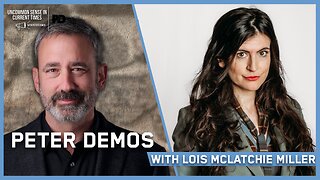Premium Only Content

Paying Off Reverse Mortgages
A reverse mortgage, typically available to homeowners aged 62 and older (55+ in California), allows them to convert part of their home equity into cash without selling their home. Understanding the different ways a reverse mortgage can be paid off is crucial for financial planning and to avoid potential pitfalls. Here are the primary methods:
1. Selling the Home
The most common way to pay off a reverse mortgage is by selling the home. Once the house is sold, the proceeds are used to repay the loan balance, including interest and fees. If the sale amount exceeds the loan balance, the remaining equity goes to the homeowner or their heirs. This method is often chosen when the homeowner no longer needs the property or wishes to downsize.
2. Refinancing
Refinancing involves taking out a new loan, often a traditional mortgage or another reverse mortgage, to pay off the existing reverse mortgage. This can be beneficial if interest rates have dropped or if the homeowner wants to switch to a loan with better terms. Refinancing requires sufficient income and creditworthiness, which may be challenging for some senior homeowners.
3. Using Other Financial Resources
Homeowners may use other financial assets, such as savings, investments, or assistance from family members, to pay off the reverse mortgage. This approach helps retain ownership of the home without taking on new debt. It’s essential to evaluate the impact on overall financial health before using this method.
4. Death of the Borrowers
When the last surviving borrower passes away, the reverse mortgage becomes due. The heirs typically have several options: they can sell the home to pay off the loan, refinance into a new mortgage, or use other financial resources to repay the loan. It’s important for heirs to understand these options to make informed decisions that align with the family’s goals and circumstances.
5. Heirs Paying Off the Loan
Heirs can choose to pay off the reverse mortgage if they wish to keep the home. They can use their funds or obtain a new mortgage to cover the loan balance. This option is important for families who want to retain the property for sentimental reasons or as part of their legacy.
Importance of Knowing the Choices, Understanding these options is crucial for several reasons:
Financial Planning: Knowing the available choices helps homeowners and their families plan for the future, ensuring that they are prepared for any eventuality.
Avoiding Foreclosure: Failure to repay the loan after the homeowner moves out or passes away can lead to foreclosure. Awareness of repayment options helps prevent this outcome.
Maximizing Equity: Different repayment methods can affect the amount of equity retained. For instance, selling the home may yield excess funds, while refinancing might offer better loan terms.
Family Legacy: Knowing the options allows families to make informed decisions about whether to keep or sell the home, aligning with their long-term goals and values.
In conclusion, being informed about the ways to pay off a reverse mortgage empowers homeowners and their heirs to make the best financial decisions, ensuring peace of mind and financial stability.
-
 5:57
5:57
China Uncensored
18 hours agoLiving in China Comes With Some Risks
23.5K24 -
 12:32
12:32
Bearing
1 day agoAustralian Gender Clinic Caught SECRETLY Transitioning Kids 🤬🤬
13.5K58 -
 4:34
4:34
AlaskanBallistics
1 day ago $1.05 earnedFosTech Echo Trigger
7.52K10 -
 9:10
9:10
ariellescarcella
12 hours agoI Asked People To Toss Out An Identity : The Queer Alphabet Is OVER
5.48K7 -
 27:00
27:00
Squaring The Circle, A Randall Carlson Podcast
19 hours agoSPECIAL EPISODE: #037 Randall Carlson Explains The Vital Role of Sacred Geometry in the Modern Age
6.26K2 -
 58:35
58:35
Trumpet Daily
21 hours ago $6.07 earnedThe Trade War Begins - Trumpet Daily | Feb. 3, 2025
20.6K35 -
 47:03
47:03
Uncommon Sense In Current Times
19 hours ago $0.63 earnedArrested For Praying Silently in Western Culture and Convicted
13K2 -
 44:19
44:19
PMG
17 hours ago $0.54 earnedIn the wake of a tragedy! Finding hope in broken times
8.34K -
 3:40:50
3:40:50
FreshandFit
10 hours agoGirls Walk Off Pod After Being Exposed As Thots By Chat! 🤣
111K123 -
 5:30:06
5:30:06
SpartakusLIVE
14 hours ago#1 King of Content kicks off YOUR week with Monday MOTIVATION
133K8